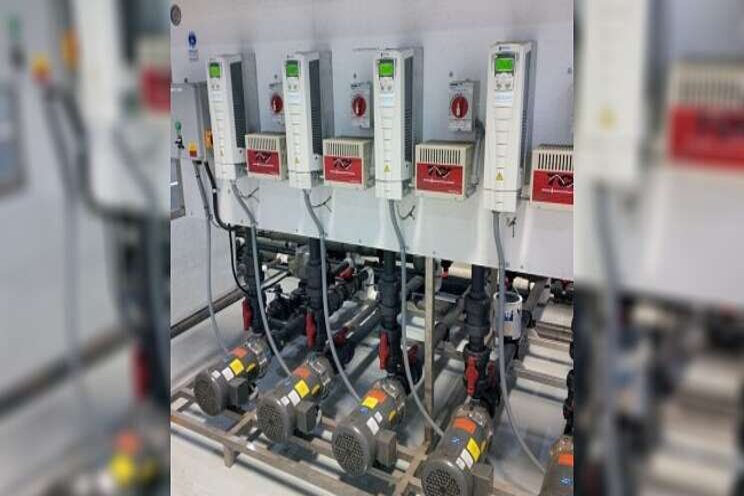Four tips for selecting a fertigation system
Added on 17 August 2021

However, these systems involve much more than just a fertilizer injector and a computer, and there are many different models to choose from. To make sure you select a system that's right for you, consider the following four tips for fertigation success:
Let the Salespeople and Engineers Do Their Job
Unless you've had a long career designing irrigation systems for commercial greenhouse operations, let an expert handle it.
Tell the salesperson or engineer what you need the fertigation system to do, and then let them design a system that makes sense for your business.
If you start requesting specific components like pumps, filters, or valves, the risk is that the salesperson will give you precisely what you're asking for—whether it's appropriate for your business or not.
Instead, tell them what you need your fertigation system to do. Do you want the ability to fill several tanks with different recipes and then pull from them throughout the day? Or do you want to save space, skip the tanks, and just have an in-line direct injection system?
Tell them what you want, then let them tell you what you need.
Test and Treat Incoming Water
The quality of your raw water will dramatically affect the cost and sophistication of treatment that will be required before you can safely apply the water to your crop.
Rainwater is usually treated with UV or multi-stage gravel filters, while well water may be treated with a reverse osmosis (RO) system.
However, if well water or municipal water has a relatively low electroconductivity (EC) level (0.3 or less), you may not need to treat it at all. Most minerals that are stripped out of the water via reverse osmosis are reintroduced through fertilizer. Also, disposing of the brine that results from reverse osmosis can be challenging, so if an RO system isn't essential, skip it.
To be sure, have a laboratory analyze your water. If there is a possibility that you may be alternating between multiple sources of water, such as rainwater and well water, make sure to test both.
Reuse or Run-to-Waste?
Growers have two options for handling the runoff of water and fertilizer that's generated after each irrigation; they can either dispose of the leachate, or capture and recycle it.
Most hydroponic growers prefer to see a runoff of anywhere from 10% to 30%. For large commercial growers, this can amount to a considerable volume of drain water each day.
In the most basic run-to-waste systems, leachate runs off the floor and out of the greenhouse, while some indoor growers simply send it down the drain. If they go this route, businesses may be required to remove the mineral salts from the leachate before dumping it. This is essentially reverse osmosis, which removes the salts and results in pure water and concentrated brine (which also must be disposed of).
A more environmentally friendly option is a closed-loop fertigation system that captures, treats, and reuses the runoff. The leachate is caught in troughs or trays and then pumped to a holding tank. Cloth filters screen out any fibrous particles before they enter the holding tank, and then the water is treated with UV, ozone, or chlorine dioxide to prevent the spread of water-borne pathogens. The treated leachate is then mixed with fresh water and fertilizer and sent back out to the crop.
This system involves more equipment and space than a standard run-to-waste system, so make sure your irrigation room can house all the extra tanks and equipment that come with a recirculating fertigation system.
Sync Your System With Your Environmental Controls
Most environmental control software also manages the fertigation system, so make sure the software you select can handle the equipment that you want to install.
Depending on the sophistication of your grow operation, some software may be better prepared to handle your needs than others. Cannabis facilities can have extravagant fertilizer recipes, use dozens of irrigation zones, and incorporate many different sensors that help growers determine when and how much to water. Vertical farms can add to this complexity with multiple levels of cultivation and scores of solenoid valves.
While some fertigation systems come with their own control software, it's better to integrate the entire cultivation facility into one system. That way, growers can monitor and respond to alarms for everything from AC units to fertigation systems all from one screen without having to jump between apps to control various cultivation systems.
Fertigation systems are one of the most significant capital expenditures for any new cultivation business. Before cutting a check for a new fertigation system, make sure you've done your homework. Test the water, know what you need, and let the experts recommend a system that's right for you.
Source and Photo Courtesy of Greenhouse Grower
Source: Greenhouse Grower
More news















